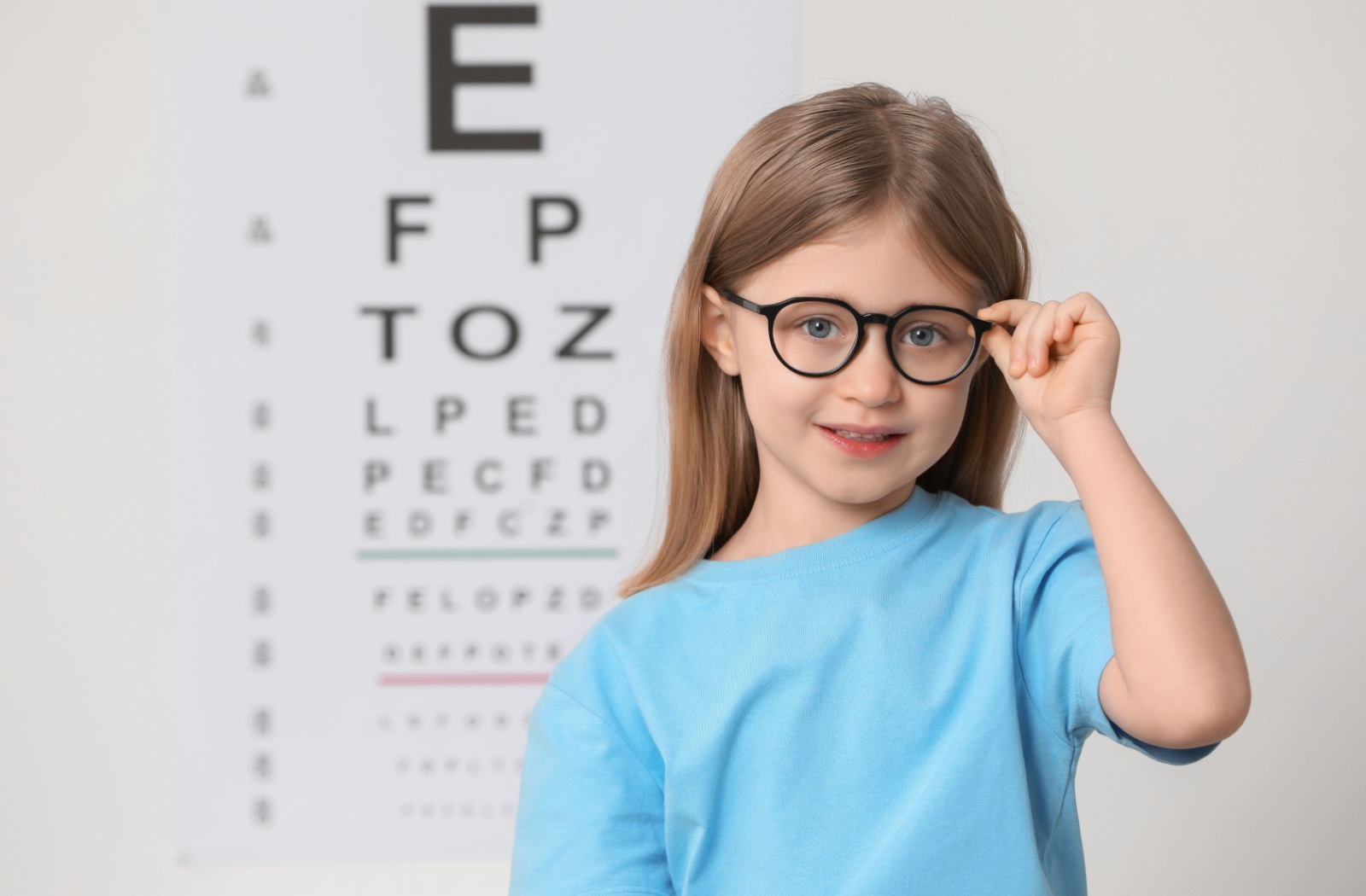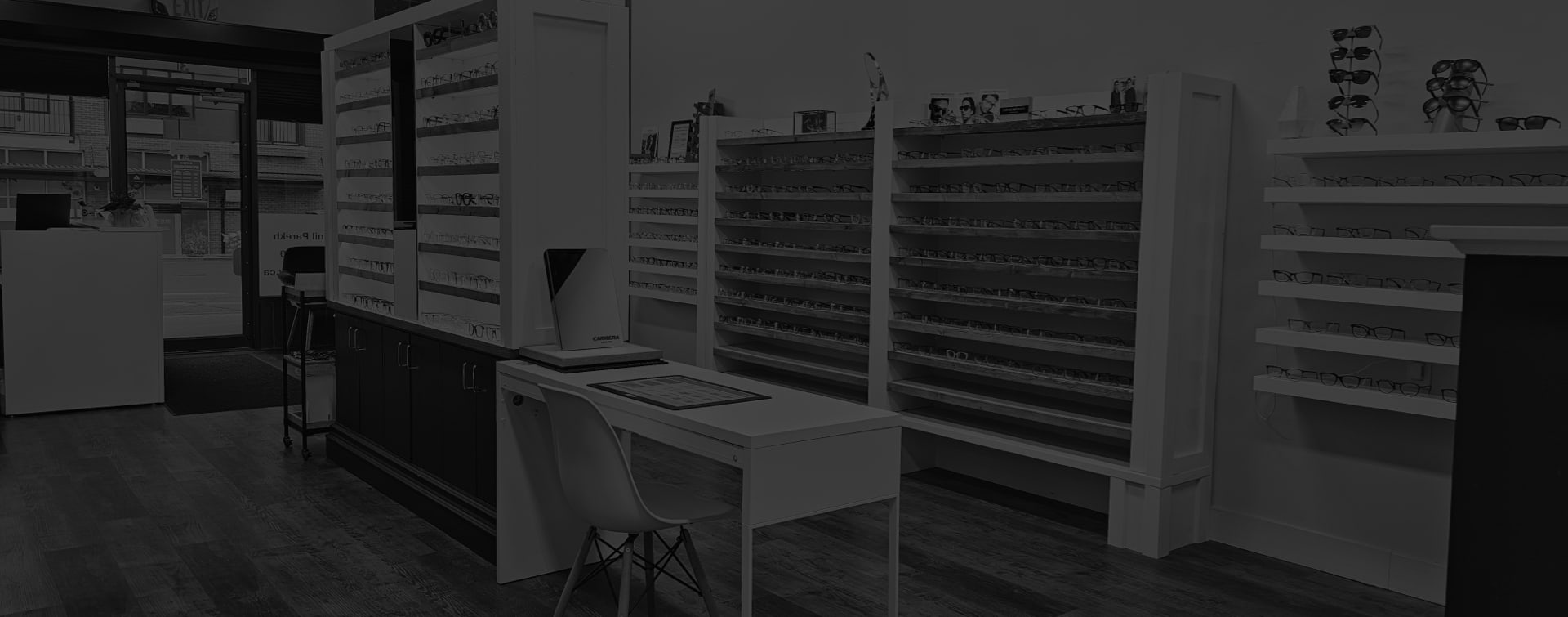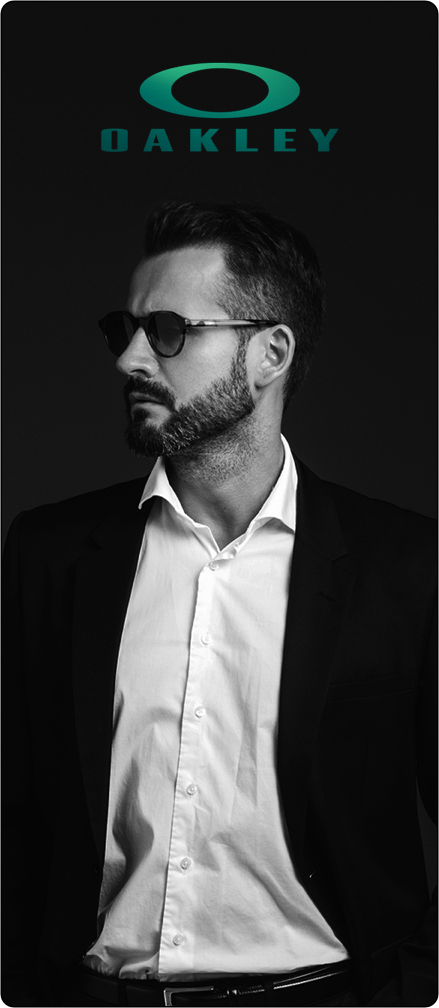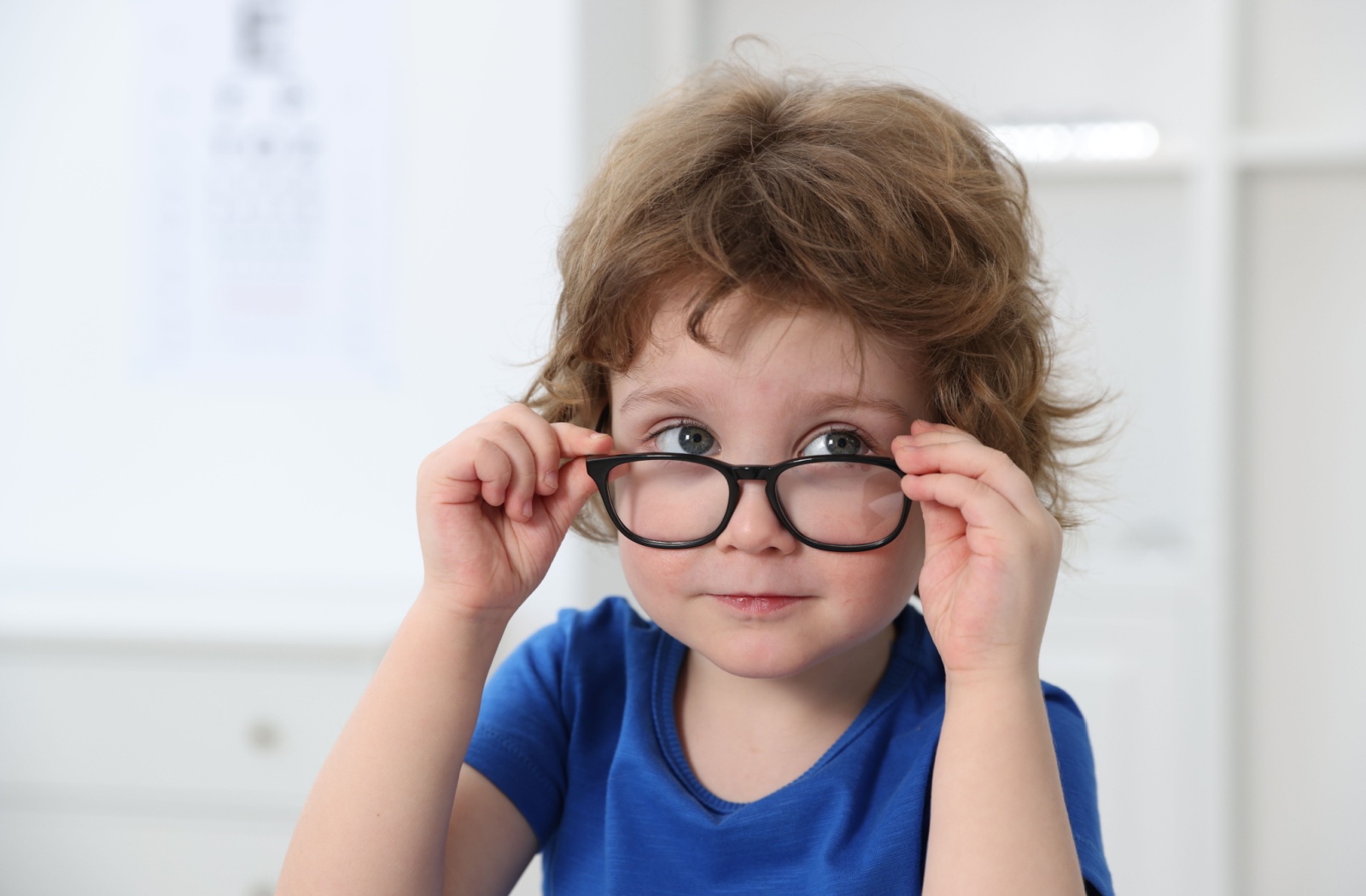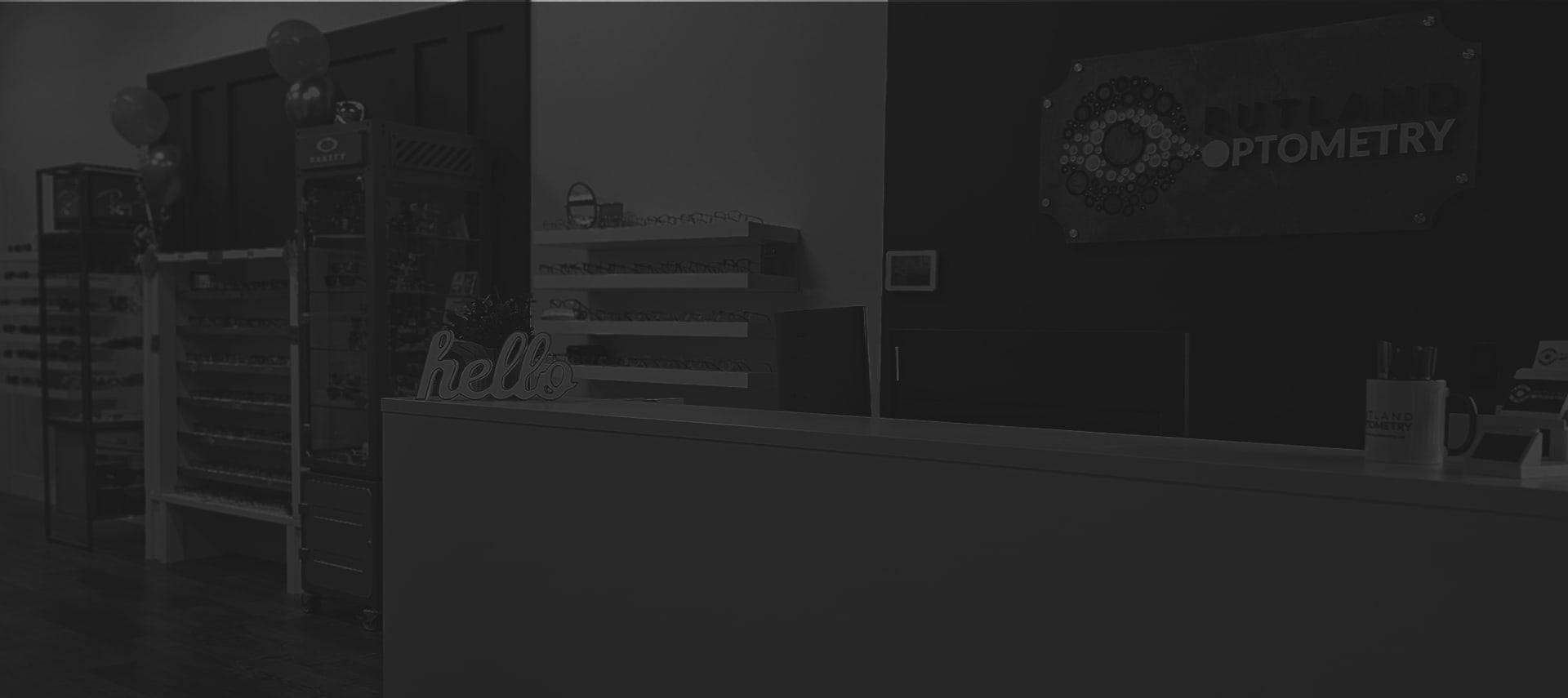When vision challenges arise, it’s natural to feel a mix of concern and curiosity about what it means for your health or your child’s. Learning about vision health is the first step to empowering your family to make informed choices.
High myopia is a severe form of nearsightedness (myopia) where the eye’s structure grows abnormally longer, leading to a stronger need for corrective lenses and an increased risk of eye complications.
Myopia affects many people worldwide, so take proactive steps now to protect your family from high myopia.
Myopia vs. High Myopia
Myopia is a common condition where distant objects appear blurry due to the way light focuses in the eye. It can start in early childhood and often progresses as kids grow. Here’s the thing, you can probably tell that your vision is blurry, but it can be hard to notice myopia in children since they may not have the language to explain what they’re experiencing. Instead, you have to watch out for signs your child may have myopia, including:
- Complaints of discomfort when looking at distant objects
- Persistent headaches
- Trouble concentrating in school
- Short attention span
- Frequent squinting or tilting the head to focus
- Rubbing eyes or blinking excessively during activities requiring focus
When it comes down to it, high myopia is simply worse myopia. We measure the amount of myopia using diopters, so you can read your prescription to see how “high” your myopia is. For example, you may see that you require a correction of -1.00. The minus (-) tells you that you’re nearsighted, and the “1.00” means you need 1 diopter of strength to correct it.
High myopia is generally considered to be when a person’s prescription reaches -6.00 diopters or worse. At this level, the eye is much longer than it should be, which can increase the risk of dangerous eye conditions later in life, such as:
- Glaucoma
- Cataracts
- Retinal detachment
- Myopic macular degeneration
Causes & Risk Factors for High Myopia
Doctors aren’t entirely sure what causes myopia. It seems to be a combination of genetic and environmental factors and about 30% of Canadians have some level of myopia, but these rates are on the rise.
Some of the risk factors for myopia include:
- Family history: If one or both parents have myopia, the likelihood of their child developing high myopia greatly increases.
- Screen time and near work: Prolonged use of digital screens, reading up close, or any activity requiring sustained focus at close distances could worsen myopia.
- Limited outdoor time: Studies suggest that spending more time outdoors in natural light reduces the risk of developing or worsening myopia.
Kids are developing myopia at a younger age and it’s progressing faster than ever before. Fortunately, parents like you can take proactive measures to help lessen the risk of high myopia by slowing myopia’s progression.

Preventing High Myopia
Managing myopia is about more than just correcting blurry vision. With the right treatments, it’s possible to control myopia’s progression and protect long-term eye health. Here’s how:
Myopia Control Eyeglasses
There are special eyeglasses that offer an innovative way for optometrists to manage the progression of myopia in children. While traditional glasses do an excellent job of correcting myopia’s blurriness, they don’t stop it from progressing. That means if your child’s vision gets worse, they’ll have to keep getting new glasses with stronger prescriptions. Myopia Control eyeglasses hope to change that.
These lenses create a clear central vision while improving the surrounding, peripheral hyperopic defocus. This particular design triggers the body’s natural function to slow down eyeball growth, which is a critical factor in myopia progression. In some cases, they can even slow myopia progression by 62-67% when compared to traditional lenses.
Myopia Control Contact Lenses
Myopia Control Contact Lenses are another powerful tool in the optometrist’s arsenal for controlling myopia progression. They use a similar myopic defocus technique to the Myopia control eyeglasses but with the convenience of contact lenses for kids who feel comfortable wearing them.
Clinical studies have shown that these contact lenses can significantly slow myopia progression by up to 59%. With these lenses, children can experience a more active lifestyle, whether it involves sports or learning, without the obstruction of traditional eyewear.
Atropine Eye Drops
Atropine is a special type of eye drop that temporarily makes the pupil bigger and helps relax the focusing muscles in the eye. When used in low doses, these drops can slow down how quickly a child’s myopia worsens.
The treatment is personalized for each child and the drops are often applied at night before they go to sleep. One of the best parts? Atropine drops can be paired with the other treatments above to try to increase the effectiveness of both. Eye drops won’t correct their vision, however, so your kid will have to also wear glasses or contact lenses.
Supporting Healthy Vision for Everyone
We’re more than just your local optometry clinic. We’re a dedicated partner in protecting your family’s vision. From dedicated myopia management options to compassionate care tailored to your needs, we’re here for you every step of the way.
Don’t wait to address concerns about your child’s vision. Book your appointment with Rutland Optometry for a comprehensive exam and personalized care plan. Together, we can help protect and support your family’s eye health for years to come.

